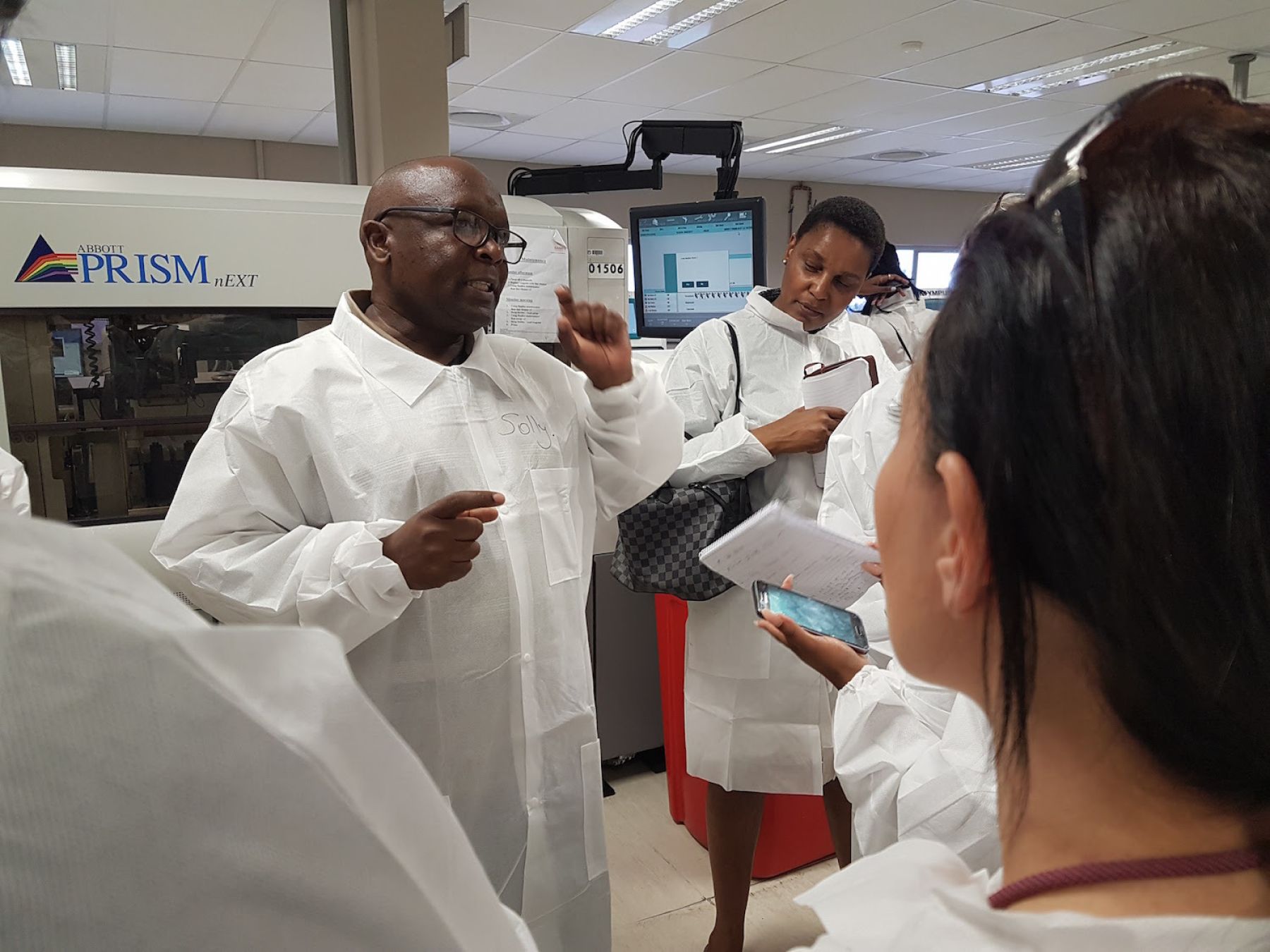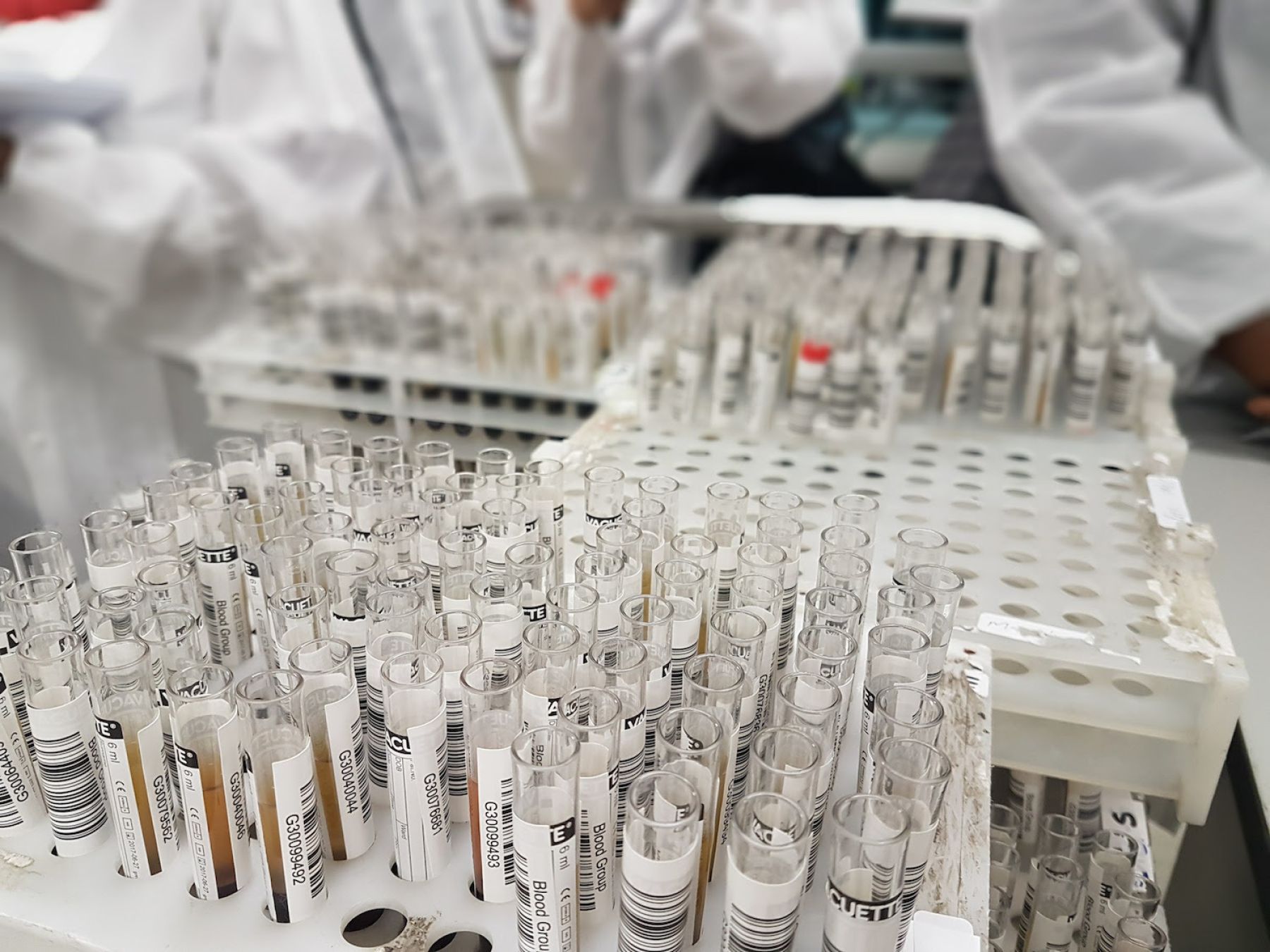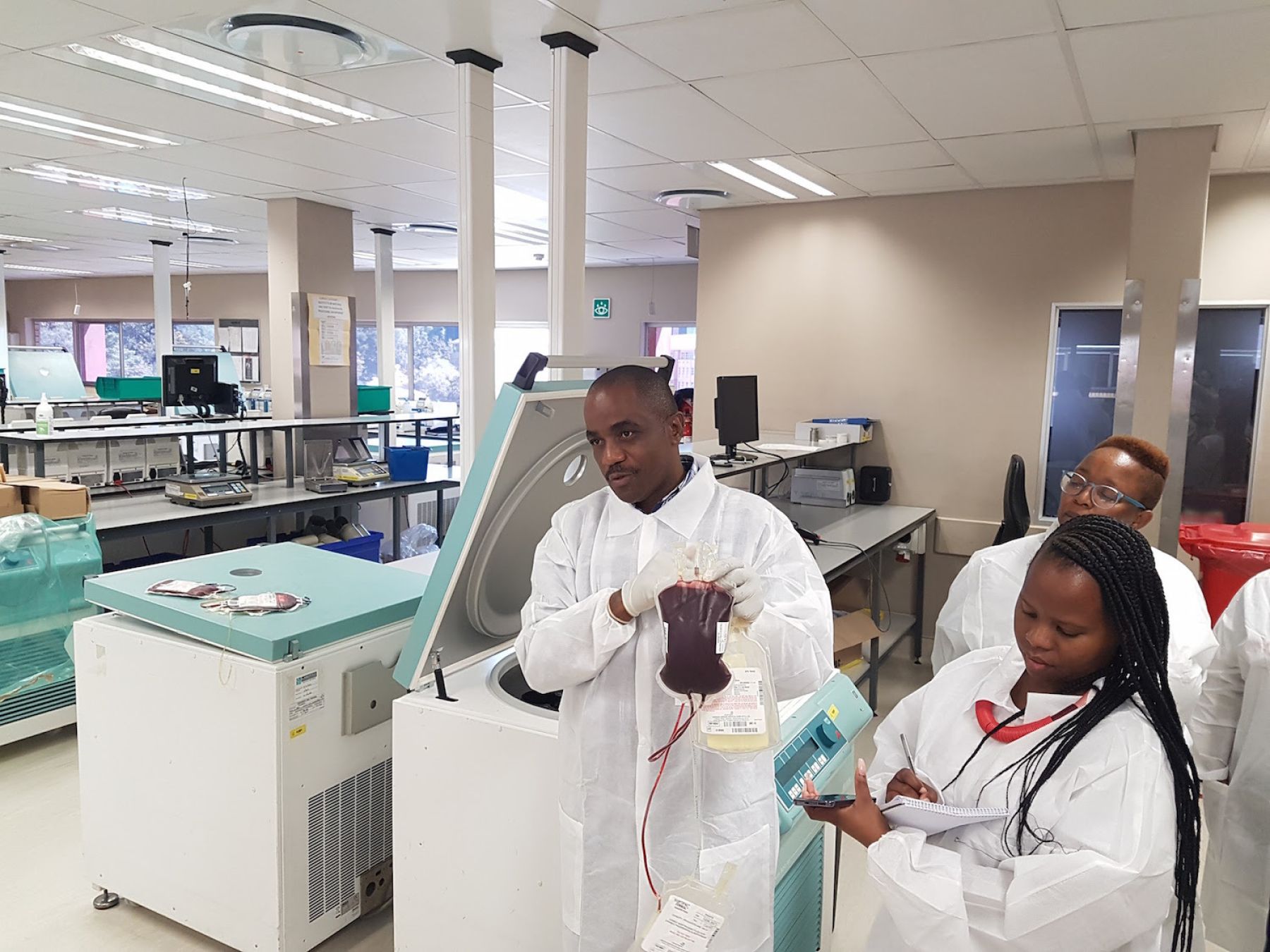Donating blood is quick and easy. The procedure takes about 30 minutes from when you fill out a form to when your blood is drawn – and voilà, you’ve saved three lives. Many people do it, every day, but it’s a fairly rare and exciting experience to actually venture behind the scenes and into the busy laboratories where the serious work happens.

Flowstars recently joined the marketing team of our relatively new client, the South African National Blood Service (SANBS), on a memorable tour of its processing and testing laboratories. Not only did we look intelligent in our lab coats and classified ourselves as pretend-doctors, but we got to meet the dedicated, friendly SANBS specialists and saw the work in action.
Silungile Mlambo, SANBS national marketing manager, gave us a warm welcome and advised that we would “be inspired” and learn new medical terms along the way. Most importantly, she said, we’d get to know the process – and that it’s not just about blood.
The team was divided into two groups. One group went to the first station, which is where processing and inventory take place, while the other group went to the second station, where donations are tested.

Processing and inventory
At this laboratory, we met the head of inventory, Clive Mkwanazi, who took us through the process.
When units arrive here, the blood gets spun down in a centrifuge and then separated into three different components: red blood cells, platelets and plasma. What is left over is called the buffy coat, which contains most of the white blood cells and platelets.
Clive then went on to explain the following:
- Red blood cells contain haemoglobin, a protein that carries oxygen throughout the body. This is used to treat patients with anaemia or blood loss due to trauma or injury. It expires after five days
- Platelets are crucial to help patients with low platelet levels, who often suffer from bruising and bleeding. Platelets also expire after five days
- Plasma is frozen at -65°C and lasts 12 months. It contains proteins and clotting factors used to treat patients with massive bleeding or clotting
Donation testing
Blood samples are sent to the second station, where we met virology supervisor Solly Machaba. This station is divided into three sections: virology, blood typing and the nucleic acid testing (NAT) lab, where blood donations are screened.
The virology section tests for four types of viruses: HIV, hepatitis C and hepatitis B, and syphilis. The NAT testing will pick up whether blood is infected – the machines will only detect a clear positive after nine tests. Blood found to be positive for any of these viruses is immediately destroyed. “Everything we keep in this section is barcoded and completely traceable; therefore, we do not have any problems with mixing and losing samples,” said Machaba.
As soon as the blood has gone through all the necessary high-level testing and, most importantly, is safe, it can be sent to hospitals where it will be used for transfusions for patients in need. One unit of blood can save three lives.

